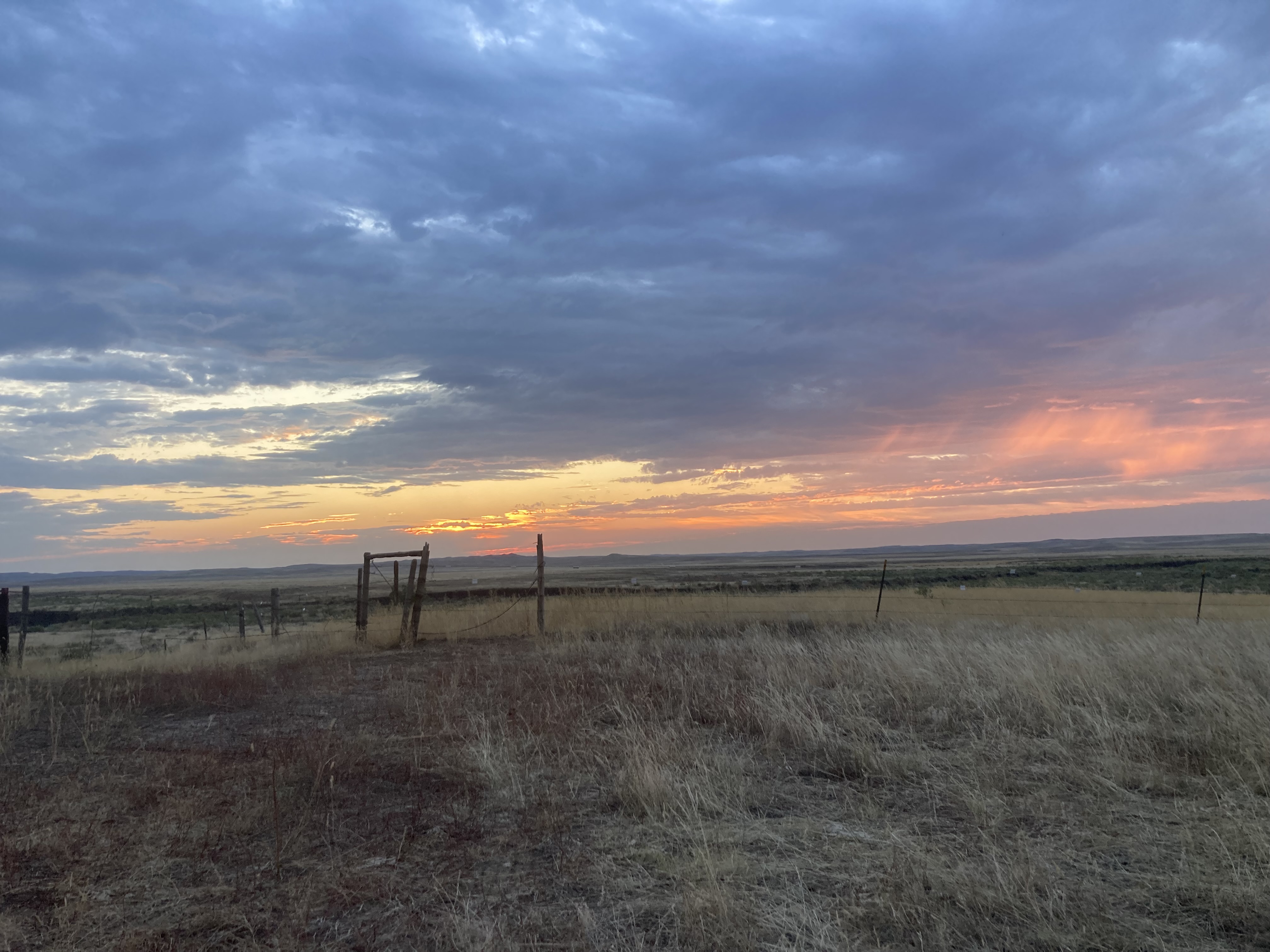Great Plains - An ocean of grass
Contact
University of Arkansas System Division of Agriculture
Cooperative Extension Service
2301 S. University Ave.
Little Rock, AR 72204

Great Plains - An ocean of grass
It is slowly sinking in. I’m finally getting to the point where I can look at a jumbled mountainside or a wide valley and guess what forces shaped the scene I am seeing. These views are more than three-dimensional because they are confounded by a fourth (time) and fifth (tectonic forces). For the past several days I’ve been traveling through the simplest of all landscapes - the Great Plains — but this vast expanse also has a fascinating backstory.
The Great Plains is a place of stability where the basement rocks beneath the region are mostly at rest. Sure they may rise and fall some as the mountains around their periphery act up, but this vast expanse in the center of our continent is mostly a geologically stable place. And the raft of rocks the Plains floats on have been stable for a long time, accumulating layer after layer of sediment. Time and gravity are equalizing forces in nature, for given enough time, even the mightiest mountain range will give way to a flat plain.
While visiting a dinosaur museum in Malta, Montana, I inspected a map showing the Western Interior Seaway as it existed about 77 million years ago, 12 million years before dinosaurs went extinct. It was a warm period in Earth history when most of the ice was gone from the poles and tectonic forces were pushing against the North American Plate from the west. The tectonic forces caused the basement rocks in the middle of the continent to dip down over a wide region. Salty ocean water filled these lower areas, sometimes to a depth of 3,000 feet.
With tectonic plate movement at about the same rate your fingernails grow, this was a slow process. But eventually, the interior of the continent from the Arctic Circle to the Gulf of Mexico was covered in a giant inland sea. In the upper Midwest - today’s corn belt — a thumb-like protrusion extended from Hudson Bay to the Western Interior Seaway, completing the expanse of flat land we see today. The Ozark Dome and the Ouachita Mountains were high and dry during this period but much of south Arkansas and the region known as the Mississippi River Embayment were under water. All manner of sea creatures of the era thrived in these warm, shallow interior oceans, leaving a rich fossil record in the southern High Plains region.
But the earth is never at rest for very long. Gradually the forces pushing from the west caused the earth’s crust to buckle and the Rocky Mountain chain (actually the second Rocky Mountain chain, because this had already happened once before) began to push out of the shallow inland ocean floor about 70 million years ago. As the Rockies rose higher over the next 20 million years, erosion began to fill the shallow sea, burying the sea creatures in the process. Slowly the entire region was uplifted, so the water gradually drained away. The youngest saltwater fossil records date to 26 million years ago, marking the end of the once vast inland sea.
But erosion is a relentless process. Gradually the outwash from the mountains onto the plains piled deeper and deeper. The largest sediments accumulated closest to the mountains, with the finer particles farther out. These coarse sediments were capped by finer sediments, creating the Ogallala aquifer that has been a critical resource for the development of agriculture in the High Plains region of the Great Plains. Being as this region was on the eastern side of the high mountains, a rain shadow was created and the region was visited by prolonged droughts. But then, as now, the wind was unrelenting and blew the soils across the vast interior of the continent. Once the region was covered in a scrim of soil, rains came and washed it about, creating the rolling landscape of the almost-flat Great Plains.
Most of the region — except along the creeks and rivers of the region — received too little annual precipitation to support a diversity of trees. But it was more than just a shortage of moisture. Over the past 200 years of European settlement, trees have been common sights in the Great Plains. Frequent fires, many of them intentionally set by Native Americans to manage grazing grounds for buffalo, kept timber out of the grasslands.
So as I drive through the open expanse of the Great Plains, I try to think of all that has come before to make these wide open spaces the grand vistas they are today.
